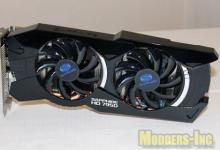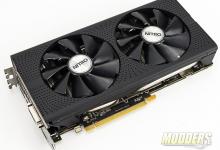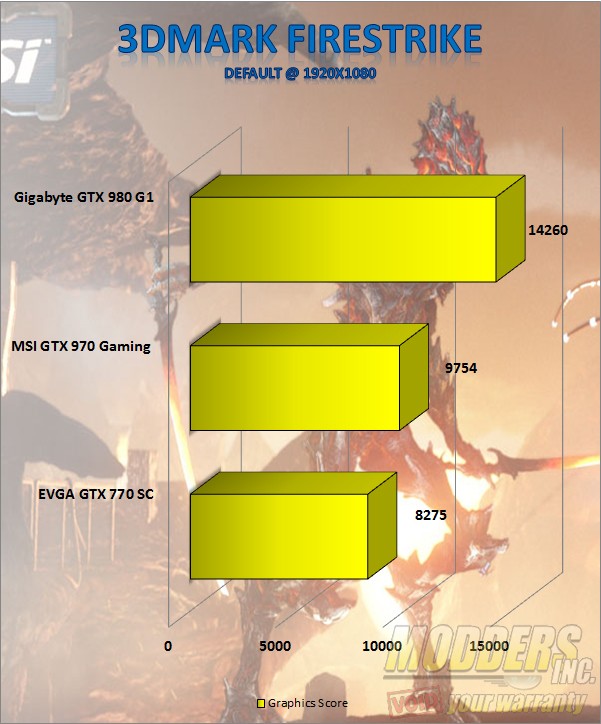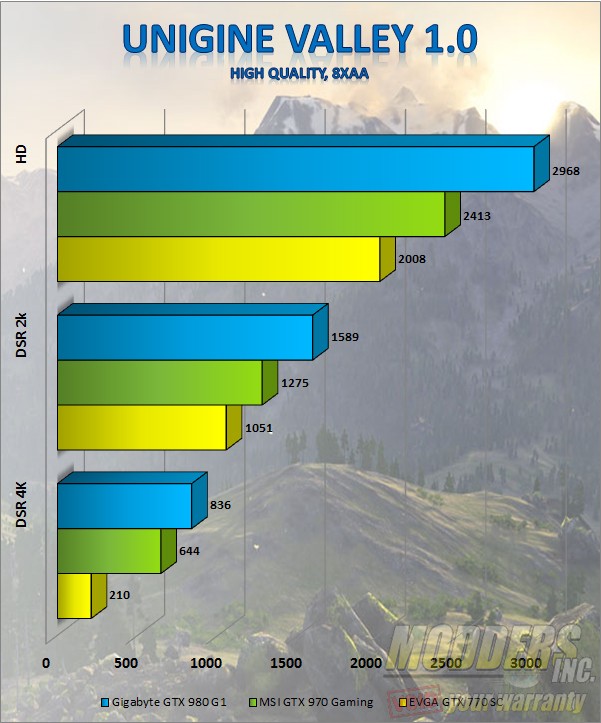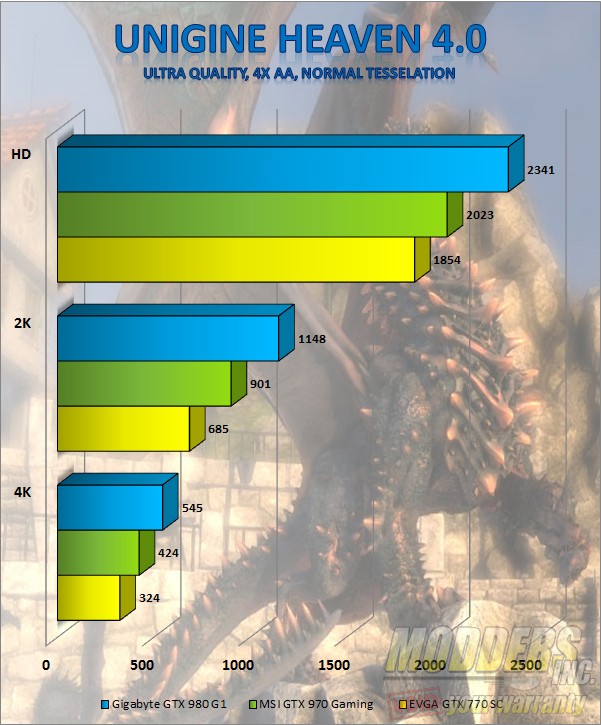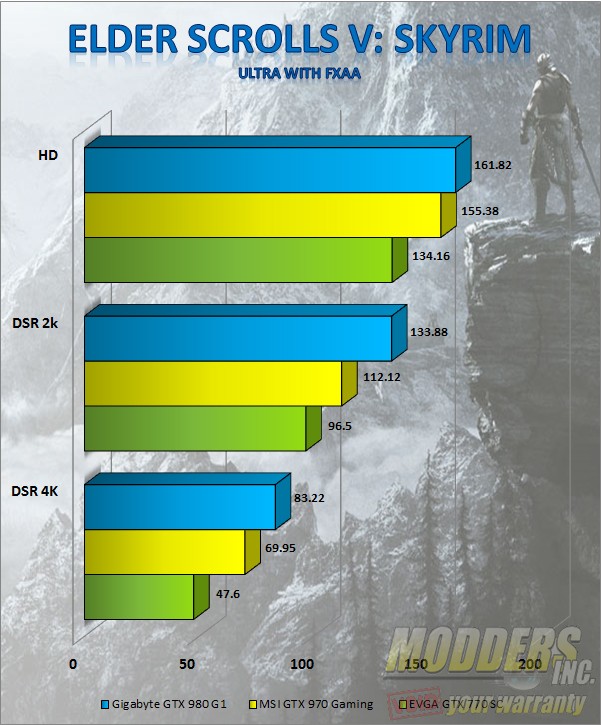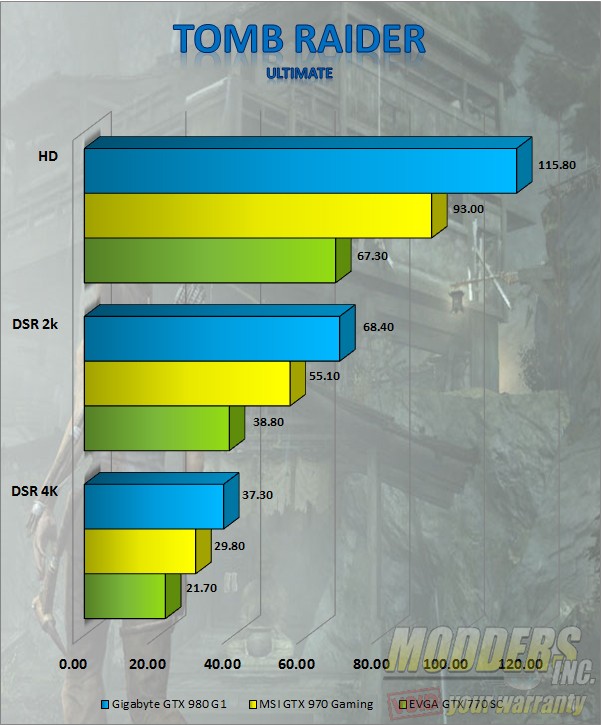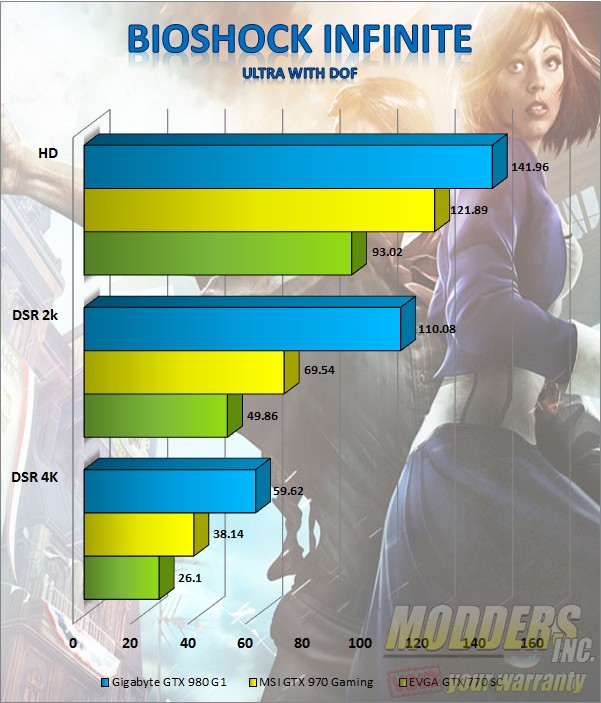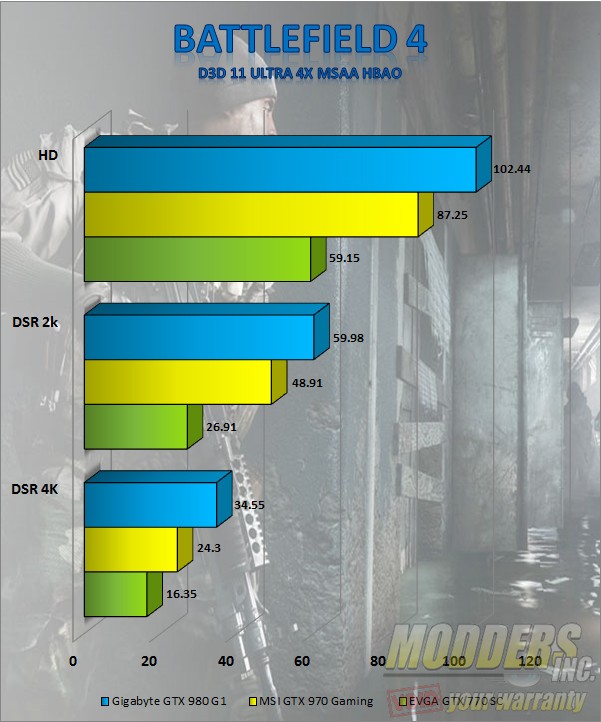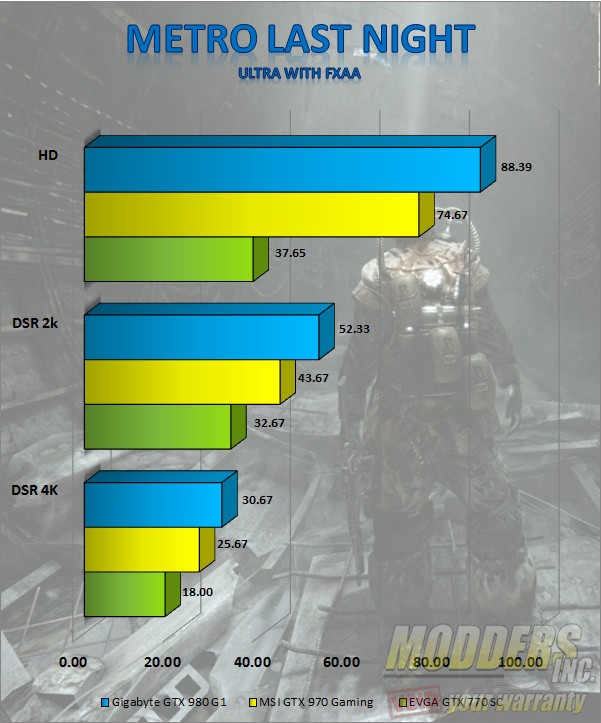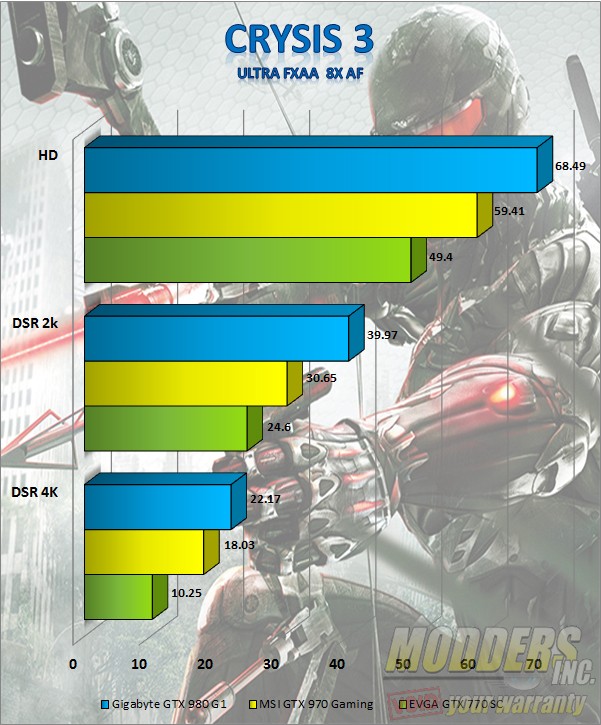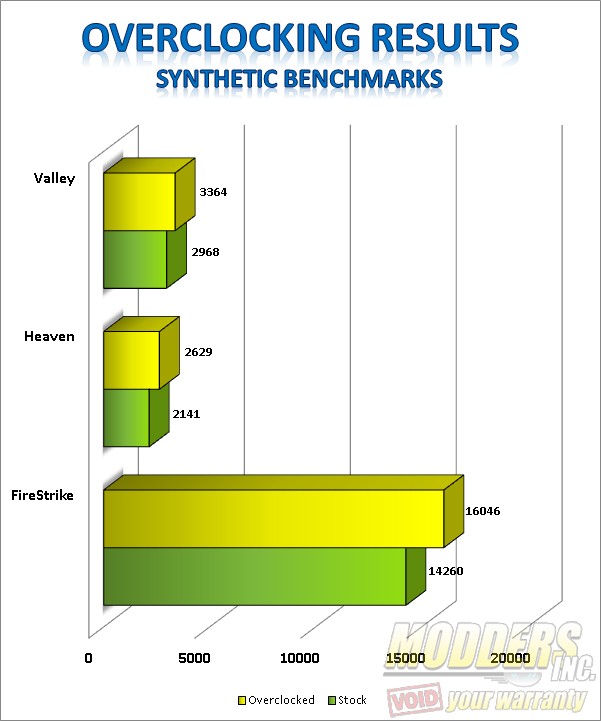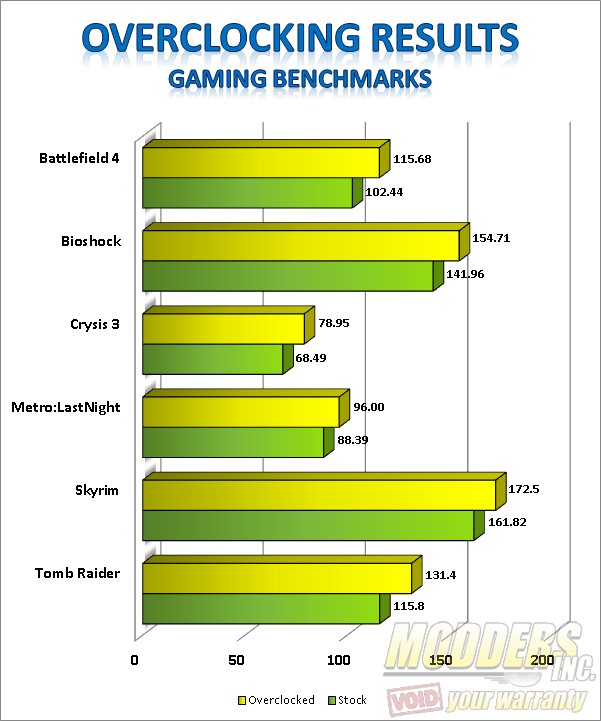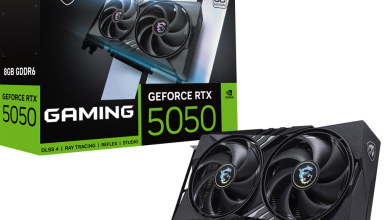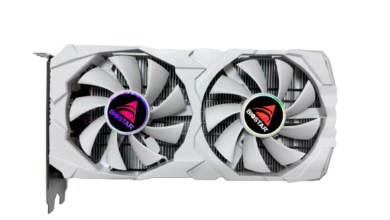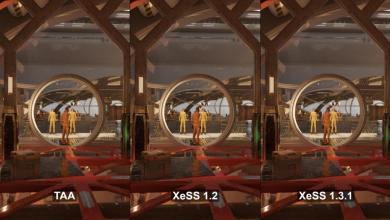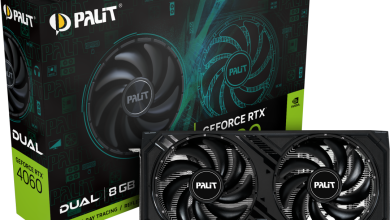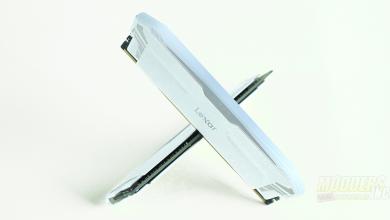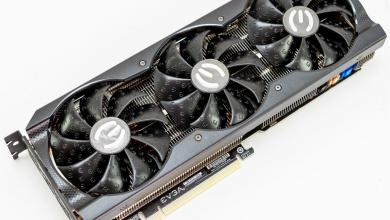Gigabyte GTX 980 G1 Gaming 4GB Video Card Review
Test System and Testing Procedures
| Processor | Intel Core i7-4770K (Retail) |
| CPU Cooler | ThermalTake Water 3.0 Extreme |
| Motherboard | MSI Z97M Gaming |
| Memory | Patriot Viper 3 “Black Mamba” 2x8GB DDR3 2100 MHz CL11 |
| Storage | Samsung 240 EVO 256GB SSD |
| Case | DimasTech EasyXL test bench |
| Drivers | NVIDIA 347.25 |
| Video Card(s) | Gigabyte GTX 980 G1 Gaming, EVGA GTX 770 SC, MSI GTX 970 Gaming |
| Monitor | Asus VS247 |
| Operating System | Windows 7 x64 Ultimate SP-1 with latest patches and updates |
Latest working BIOS, updates and drivers were used at the time of the review. Each test was conducted at least three times for accuracy. Benchmarks were run at HD (1920×1080), DSR 2k(2715×1527) & DSR 4k(3480×2160).
About NVIDIA Dynamic Super Resolution
With the introduction of the new Maxwell graphics cards, NVIDIA is also announcing a new feature that delivers superior image quality unlike any other feature before. The new Dynamic Super Resolution feature within GeForce Experience closely simulates near-4K display fidelity at 1080p resolutions. Higher resolution is rendered in the GPU and downsampled for the 1080p display output. Unlike other downsampling methods however, NVIDIA employs a 13-tap Gaussian filter method which is considerably much more precise compare to a simple box filter to preserve image quality and minimize detail loss. Since this feature is integrated into GeForce Experience, users do not need to set complicated custom resolution modes but only need to click the “optimize” feature and DSR is enabled automatically. By default, DSR is set at a 33% smoothness filter but users can customize this setting from within GeForce Experience.

Gaming Benchmarks
- The Elder Scrolls V: Skyrim – Ultra Preset with FXAA on. 60 second playthrough
- Tomb Raider – Ultimate Preset. Built-in benchmark.
- Bioshock Infinite – Ultra Preset with DDoF ON. Built-in benchmark
- Battlefield 4 – Ultra Preset with 4x MSAA. 60 second playthrough
- Metro: Last Light- Very High Preset with 16x AF & Tessellation at Bery high. Built-in Benchmarks
Synthetic Benchmarks
3DMark Firestrike from Futuremark is a Semi-synthetic DirectX11 benchmark designed for high-performance gaming PCs. Firestrike performs advanced geometry, illumination and particle tests with its Graphics benchmark and performs physics simulations using the CPU. For our video card test, only the graphical score is taken.
Unigine Valley 1.0 and Heaven 4.0 are GPU intensive synthetic benchmarks that utilize tessellation, advanced lighting, dynamic environments and other DirectX11 graphical features. Both of these are excellent for video card stability and temperature testing and even supports Stereo3D and multi-monitor benchmarking.
Gaming Benchmarks
The first in our real-world gaming benchmarks involves the ultra-popular The Elder Scrolls V: Skyrim which runs on Bethesda’s Creation Engine and utilizes a DirectX 9 API. Benchmarks were performed during the initial escape scene in the beginning at Helgen while Alduin the ancient dragon razes the hold to the ground.
Tomb Raider is a re-launch title of the decades old video game series utilizing a DirectX 11 Crystal Engine to render a 3rd-person action adventure game. It has a built-in benchmark used for cross-video card comparison.
Bioshock Infinite is the third title in the alternate-universe first-person shooter franchise utilizing Unreal Engine 3. The built-in benchmark was used for video card comparison.
Battlefield 4 is an intense military first-person shooter game that utilizes DICE’s Frostbite engine. A 60-second playthrough in the single player Singapore campaign was used for the benchmark.
Metro:Last Light is a post-apocalyptic first person shooter that combines stealth and horror elements that uses the A4 engine.
Crysis 3 is labeled as the GPU killer. Just like the Original Crysis had the GPUs crying for their mother, so does Crysis 3. Crysis 3 brings back Prophet to New York in 2047. Crysis 3 uses the latest Cryengine for stunning visuals. The level we chose was just after entering the tunnels. This features good visuals and a mixture of environments as well as a good firefight towards the end.
Overclocked Performance
Stock values: 1228 MHz Core/1329 MHz Boost/1392 MHz actual and 1753 MHz Memory
Overclocked values without voltage adjustment: 1399 MHz Core/1500 MHz Boost/1563 MHz actual and 2000MHz Memory
Synthetic Benchmarks
Gaming Benchmarks
